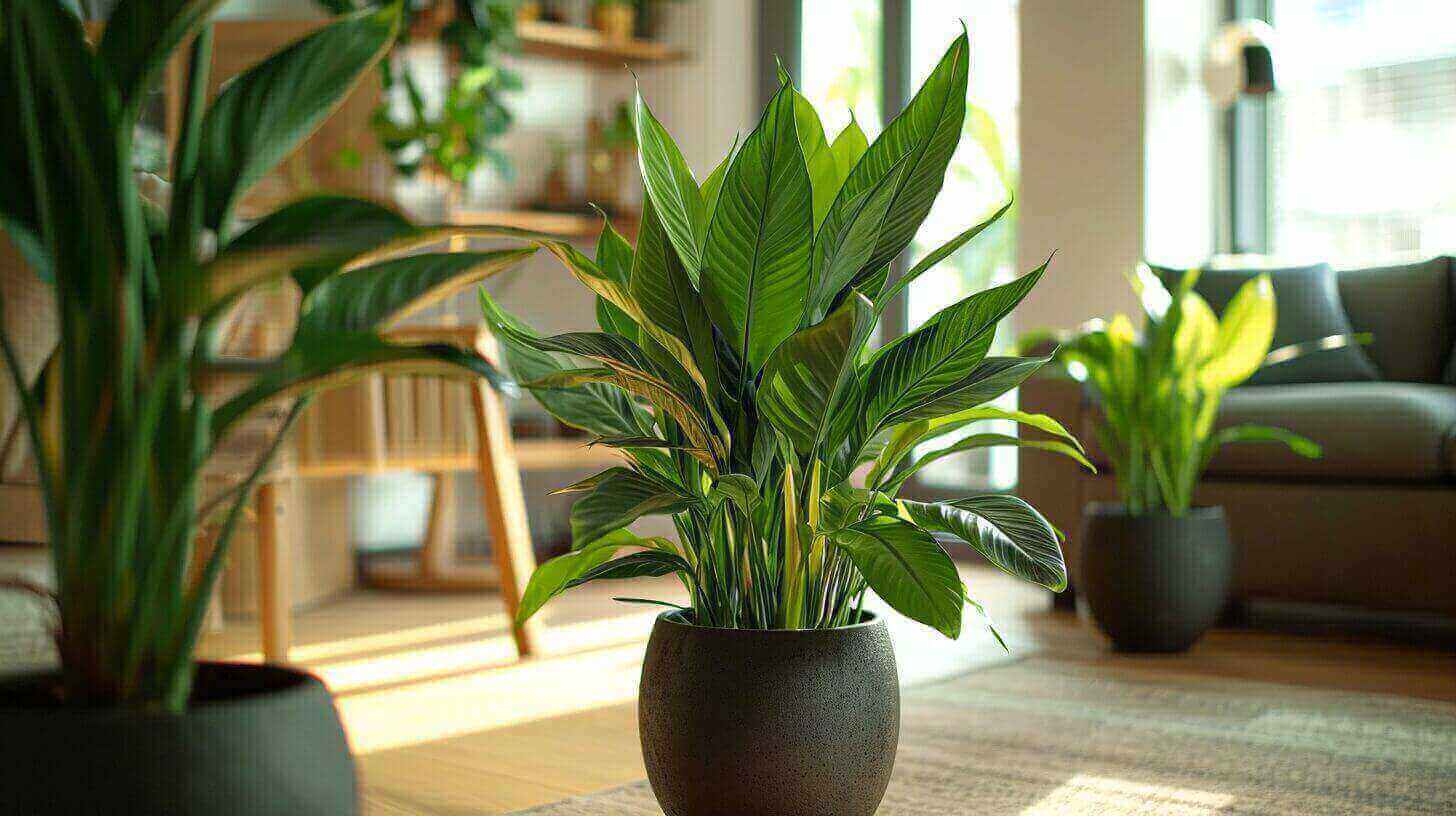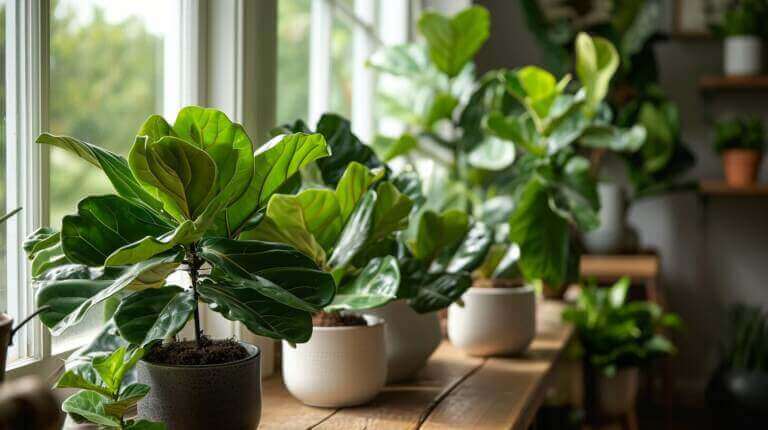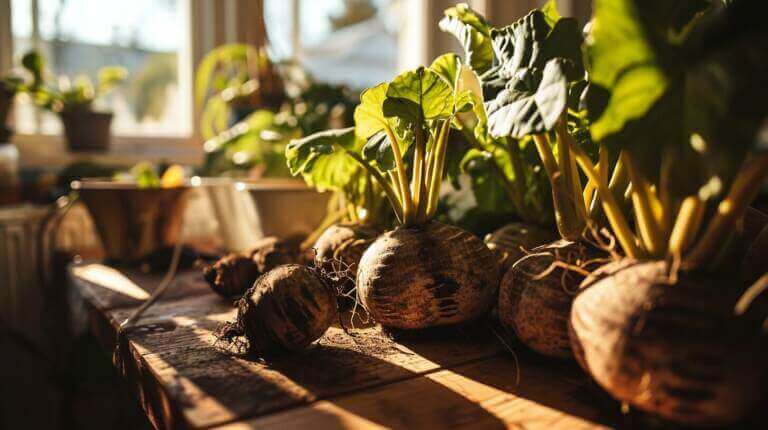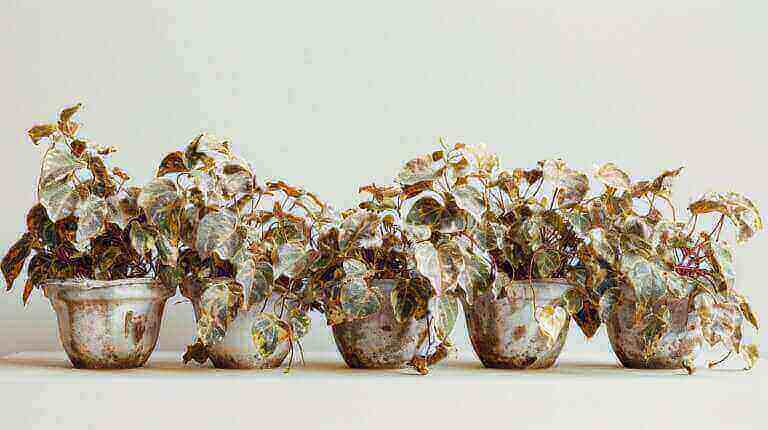Keeping Cast Iron Plants and Aspidistra Elatior Happy Indoors: A Care Guide
Welcome to my care guide for keeping cast iron plants and aspidistras happy indoors! If you’re looking for low-maintenance houseplants that can withstand less-than-ideal conditions, these plants are perfect for you. In this guide, I’ll share all the tips and tricks you need to know to ensure the health and vitality of your cast iron plants and aspidistras. Let’s get started!
Key Takeaways:
- Cast Iron Plants and Aspidistras are tough houseplants that can thrive in poor lighting conditions and tolerate neglect.
- They can adapt to a wide range of light conditions, but avoid direct sunlight.
- Both plants are not sensitive to humidity levels, making them low-maintenance.
- Fertilize once every two to three months during the growing season.
- Cast Iron Plants and Aspidistras are slow-growing, long-lasting houseplants that are great for beginners.
Light and Water Requirements for Cast Iron Plants and Aspidistras
When it comes to lighting, Cast Iron Plants and Aspidistras are incredibly versatile. They can adapt and thrive in a wide range of lighting conditions, making them an ideal choice for different areas of your home. These plants can tolerate both low and moderate light levels.
However, it’s important to keep them away from direct sunlight. Excessive exposure to direct sunlight can cause their leaves to burn and damage the plant. Instead, place your Cast Iron Plant or Aspidistra in a north or east-facing window, or in a bright but shady spot in a room. This will provide them with the optimal amount of light without risking leaf damage.
When it comes to watering, Cast Iron Plants and Aspidistras have relatively low water requirements. These plants prefer to dry out slightly between waterings, and overwatering can lead to root rot. It’s best to allow the top few inches of soil to dry out before giving them a thorough watering. Remember, it’s always better to underwater than overwater these plants.
As a general rule of thumb, water your Cast Iron Plants and Aspidistras once every 1-2 weeks, depending on the moisture level of the soil. Always make sure to use well-draining soil and pots with drainage holes to prevent waterlogging. Monitor the moisture levels of the soil regularly to ensure you’re providing the right amount of water for your plants.
Table: Light and Water Requirements Comparison
| Light Requirements | Watering |
|---|---|
| Tolerates low to moderate light | Allow top few inches of soil to dry out between waterings |
| Avoid direct sunlight | Water once every 1-2 weeks, depending on soil moisture |
Humidity, Temperature, and Soil Requirements for Cast Iron Plants and Aspidistra Elatior
Cast Iron Plants and Aspidistras are hardy houseplants that can tolerate a wide range of environmental conditions. When it comes to humidity, these plants are not particularly sensitive, making them suitable for both dry and moist indoor environments. You don’t need to worry about maintaining specific humidity levels for Cast Iron Plants and Aspidistras, as they can adapt well to varying moisture levels in the air.
When it comes to temperature, Cast Iron Plants and Aspidistras are quite resilient. They can handle a broad range of temperatures, making them ideal for homes that experience fluctuations in temperature. However, they do prefer temperatures between 60°F (15°C) and 75°F (24°C) for optimal growth. Avoid exposing these plants to extreme cold or hot temperatures, as it may cause damage to their leaves.
In terms of soil requirements, Cast Iron Plants and Aspidistras prefer a well-draining potting mix. A good option is a mixture of peat moss, perlite, and coarse sand. This type of soil mix allows excess water to drain away, preventing the roots from becoming waterlogged. It’s important to choose a pot with drainage holes to ensure proper drainage and prevent waterlogging, as these plants do not tolerate soggy soil.
| Humidity | Temperature | Soil |
|---|---|---|
| Tolerant of both dry and moist air | Ideal temperature between 60°F (15°C) and 75°F (24°C) | Well-draining mix of peat moss, perlite, and coarse sand |
At the end of the day, Cast Iron Plants and Aspidistras are versatile and adaptable plants that can thrive in various indoor environments. Their ability to withstand different humidity levels, temperature fluctuations, and soil conditions makes them excellent choices for beginner plant enthusiasts or those looking for low-maintenance houseplants.
Fertilizing, Repotting, and Propagation of Cast Iron Plants and Aspidistra Elatior
Fertilizing Cast Iron Plants and Aspidistras is an important part of their care routine. While they are not heavy feeders, a moderate amount of nutrients can help keep these plants healthy and thriving. I recommend fertilizing them once every two to three months during the growing season. Simply dilute a normal strength houseplant feed solution and apply it to the soil according to the package instructions. This will provide them with the necessary nutrients without overwhelming their delicate root systems.
When it comes to repotting, Cast Iron Plants and Aspidistras are not frequent candidates for this process. They prefer to be slightly root-bound and can go several years without needing a larger pot. However, if you notice the roots becoming overcrowded or the plant outgrowing its current container, it may be time to consider repotting. Choose a pot that is only slightly larger than the current one, as these plants prefer a snug potting environment. Use a well-draining potting mix to prevent waterlogging and ensure proper moisture levels.
If you’re interested in propagating your Cast Iron Plants and Aspidistras, the most common method is through division. This can be done during repotting, where you carefully separate the plant into smaller clumps, ensuring each division has a healthy root system and adequate foliage. Plant the divisions in their own pots and provide them with the same care as mature plants. Keep in mind that propagation can be a slow process, as these plants have a slow growth rate. Be patient and provide consistent care, and you’ll soon have new plants to enjoy.
Common Cast Iron Plant Problems and How to Address Them
While Cast Iron Plants and Aspidistras are generally hardy, they can still experience a few issues from time to time. One common problem is yellowing leaves, which can be a sign of overwatering or poor drainage. Ensure that the soil is well-drained and allow the top inch of soil to dry out before watering again. Another issue you may encounter is brown tips on the leaves, which can be caused by low humidity or excessive direct sunlight. Mist the leaves occasionally or place a tray of water near the plant to increase humidity levels. Finally, if you notice the plant becoming leggy or stretching towards the light, it may need more brightness. Consider moving it to a brighter location or supplementing with artificial lighting.
By understanding the proper fertilization, repotting, and propagation techniques, you can ensure that your Cast Iron Plants and Aspidistras thrive in your home. Remember to provide them with the right care, monitor for any common problems, and enjoy the beauty and resilience of these wonderful houseplants.
FAQ
What are some common pests that affect Cast Iron Plants?
Cast Iron Plants are generally pest-resistant. However, they can occasionally be affected by common pests such as spider mites. Regular plant care and inspection can help keep these pests at bay.
How do I propagate my Cast Iron Plant?
Propagation of Cast Iron Plants is typically done by division. This involves removing the plant from its pot, separating a section of the root system along with a few attached leaves, and replanting it in a new pot with fresh potting soil.
What are some essential plant care tips for Cast Iron Plants?
Cast Iron Plants are easy to care for. They prefer low light conditions and too much direct sun can cause the leaves to turn yellow. The plant needs to be watered when the soil is dry, but be careful not to overwater as this can lead to root rot.
When and how should I prune my Cast Iron Plant?
Prune your Cast Iron Plant in the spring and summer to maintain its shape and remove any yellow or brown leaves. This is also a good time to check for pests and diseases.
How do I care for my Cast Iron Plant indoors?
Cast Iron Plants make a great choice for an indoor plant as they are easy to care for and can tolerate low light conditions. They prefer indirect light and well-draining potting soil. Water your plant when the soil is dry to the touch.
What does the care guide for Aspidistra plants recommend?
The care guide for Aspidistra, also known as the cast iron plant, recommends keeping the plant in low light conditions, watering when the soil is dry, and feeding with a balanced plant food during the growing season.
Can I grow a variegated Cast Iron Plant outdoors?
Yes, you can grow a variegated Cast Iron Plant outside. However, they are not as tough as their all-green counterparts and may not tolerate extreme conditions. They prefer a spot with indirect light and well-draining soil.






